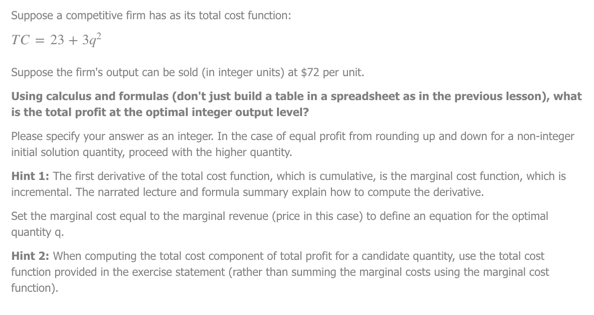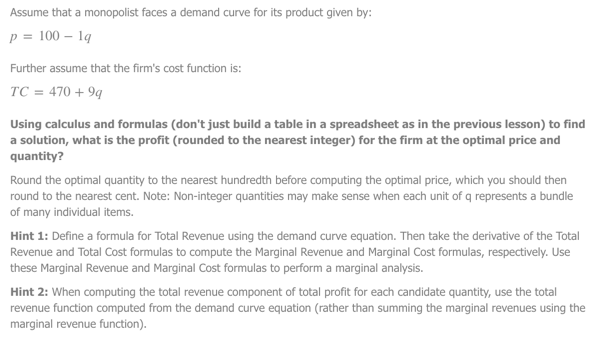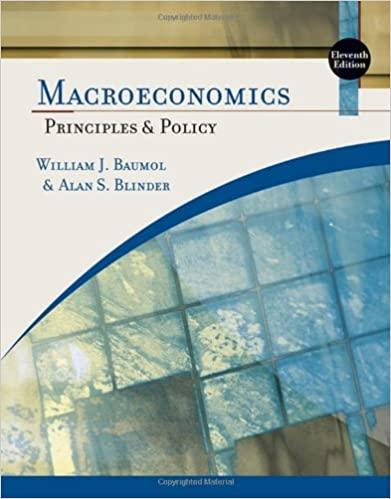Part 1)
Assume that a competitive firm has the total cost function: TC = 1q - 40q2 + 740q + 1600 Suppose the price of the firm's output (sold in integer units) is $650 per unit. Using calculus and formulas to find a solution (don't just build a table in a spreadsheet as in the previous lesson), how many integer units should the firm produce to maximize profit? Please specify your answer as an integer. Hint 1: The first derivative of the total cost function, which is cumulative, is the marginal cost function, which is incremental. The narrated lecture and formula summary explain how to compute the derivative. Set the marginal cost equal to the marginal revenue (price in this case) to define an equation for the optimal quantity q. Rearrange the equation to the quadratic form aq' + bq + c = 0, where a, b, and c are constants. Use the quadratic formula to solve for q: q = -b+ vb2 - 4ac 2a For non-integer quantity, round up and down to find the integer quantity with the optimal profit. Hint 2: When computing the total cost component of total profit for each candidate quantity, use the total cost function provided in the exercise statement (rather than summing the marginal costs using the marginal cost function).Suppose a competitive firm has as its total cost function: TC = 23 + 3q2 Suppose the firm's output can be sold (in integer units) at $72 per unit. Using calculus and formulas (don't just build a table in a spreadsheet as in the previous lesson), what is the total profit at the optimal integer output level? Please specify your answer as an integer. In the case of equal profit from rounding up and down for a non-integer initial solution quantity, proceed with the higher quantity. Hint 1: The first derivative of the total cost function, which is cumulative, is the marginal cost function, which is incremental. The narrated lecture and formula summary explain how to compute the derivative. Set the marginal cost equal to the marginal revenue (price in this case) to define an equation for the optimal quantity q. Hint 2: When computing the total cost component of total profit for a candidate quantity, use the total cost function provided in the exercise statement (rather than summing the marginal costs using the marginal cost function).Assume that a monopolist faces a demand curve for its product given by: p = 100 - 1q Further assume that the firm's cost function is: TC = 470 + 9q Using calculus and formulas (don't just build a table in a spreadsheet as in the previous lesson) to find a solution, what is the profit (rounded to the nearest integer) for the firm at the optimal price and quantity? Round the optimal quantity to the nearest hundredth before computing the optimal price, which you should then round to the nearest cent. Note: Non-integer quantities may make sense when each unit of q represents a bundle of many individual items. Hint 1: Define a formula for Total Revenue using the demand curve equation. Then take the derivative of the Total Revenue and Total Cost formulas to compute the Marginal Revenue and Marginal Cost formulas, respectively. Use these Marginal Revenue and Marginal Cost formulas to perform a marginal analysis. Hint 2: When computing the total revenue component of total profit for each candidate quantity, use the total revenue function computed from the demand curve equation (rather than summing the marginal revenues using the marginal revenue function)









